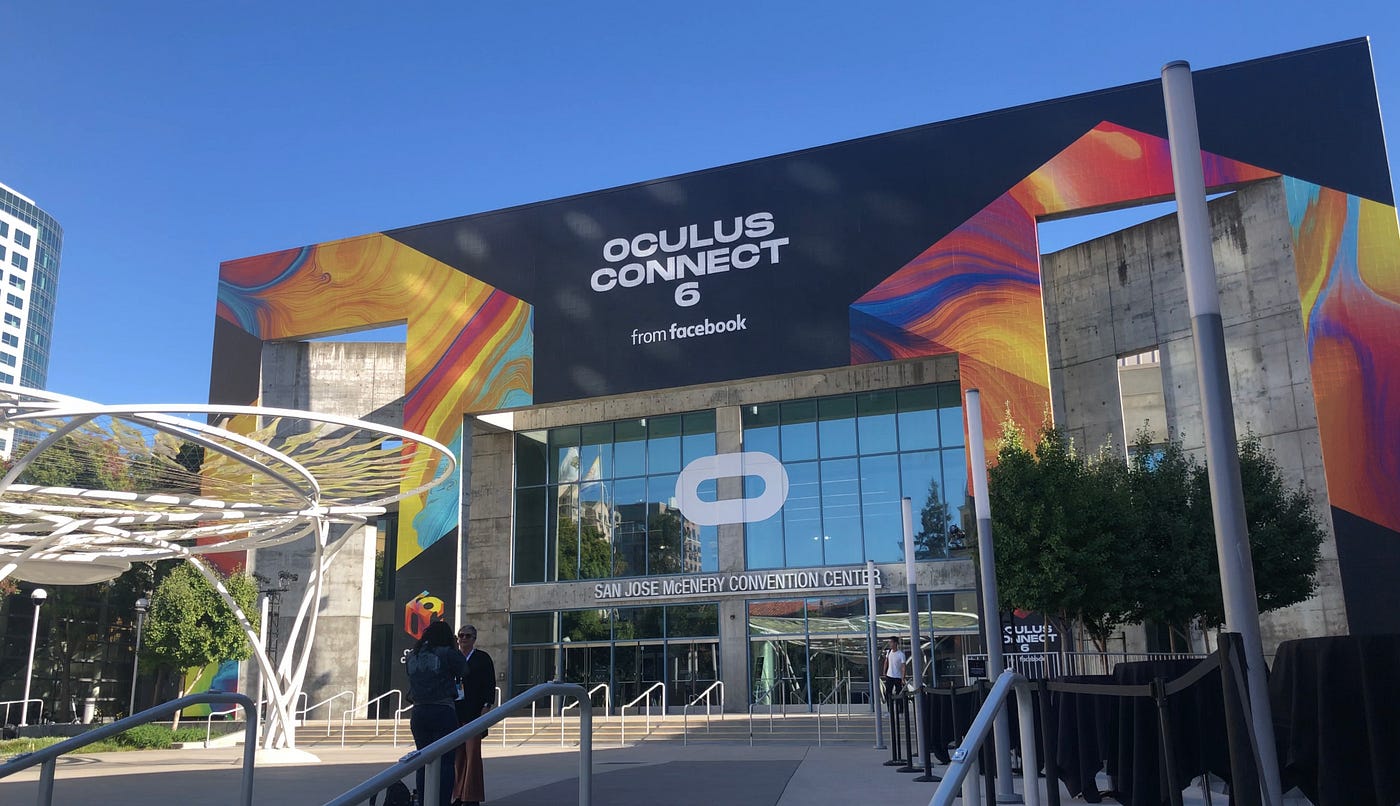
September 25th and 26th are marked as significant dates on this year’s immersive technology calendar— as Facebook hosts its annual Oculus Connect.
This conference is where we learn what’s cooking behind Facebook’s Reality Labs, and this year looks to be a game-changer. (While every year claims the same mantra, I’m hoping this one rings true.) I’ll be attending throughout both days sharing whatever bits I can, so stay tuned as we dive deep into virtual and augmented reality.
Skip to Day Two below for the current updates! Photos to come.
10 am PDT — The Keynote!
Within 20 minutes, we’re hit with a bunch of stuff. Here’s a lowdown:
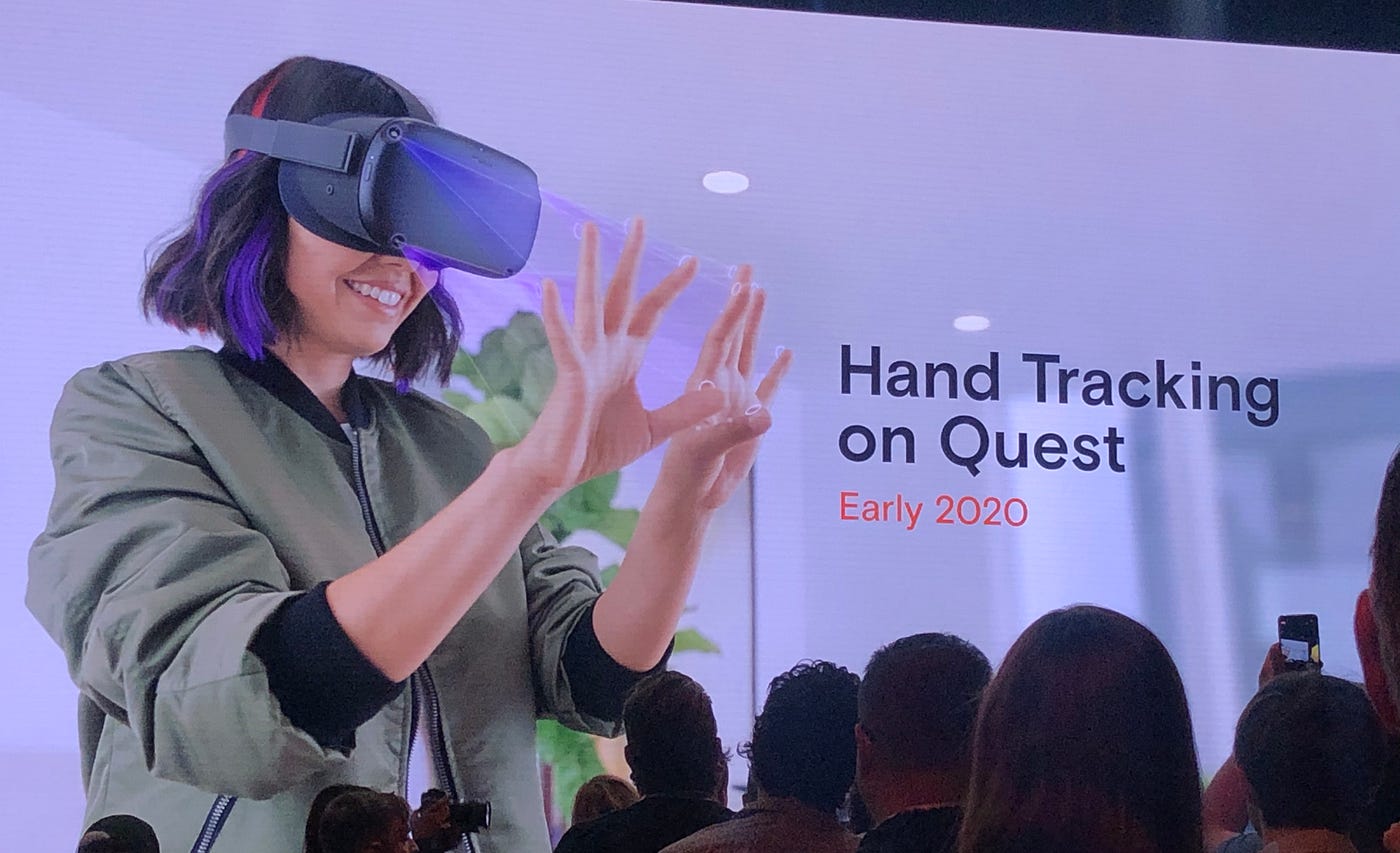
10:09am, Oculus debuts an Oculus Link for this November, a software update that allows Quest owners the ability to play Rift experiences via a cable. While it’s a tech announcement, it’s a big deal for some of the most technically demanding experiences.
10:10am, Quest hand tracking announced for early 2020! This is huge, as suddenly we can create experiences without the need for controllers. This widely increases the amount of possible users that aren’t ‘gamers’. We hear a little more about brain-computer interfaces as future input, but it’s still Sci-Fi territory for now.
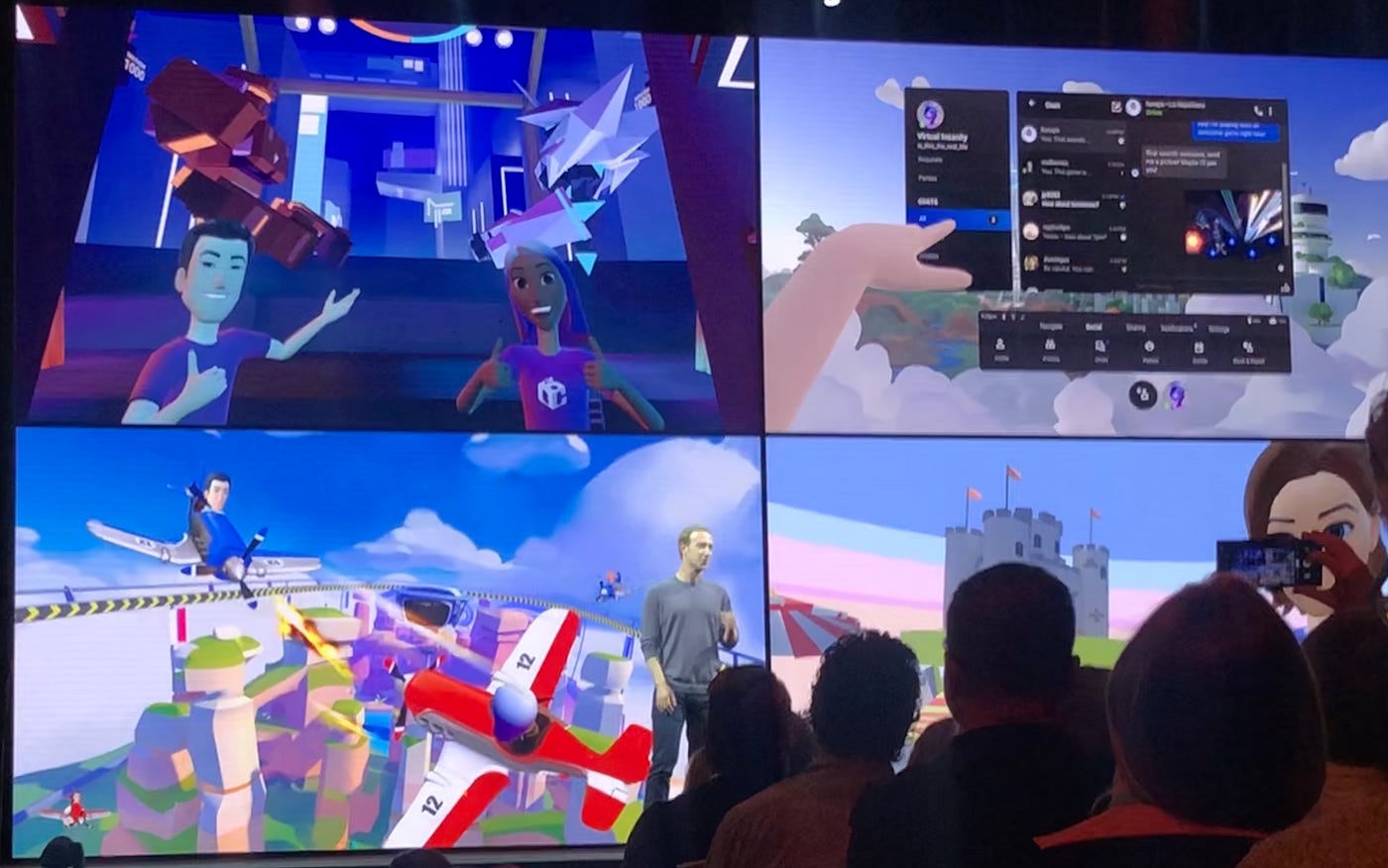
10:15am, we’re introduced to Facebook Horizon, a new social experience for everyone in VR. It’s releasing sometime next year, and reminds me of Dreams, the title coming to PlaystationVR. People can come together to build experiences and play them, without the need to learn code. I think this is a beautiful creation tool for any designers. We’ll see more news in the future, but definitely one to keep our eyes on.
10:22am, we go over the “Dimensions of Closeness”, frequency, diversity, and strength of human interactions. This leads us to Facebooks main announcement: They are making Augmented Reality Glasses. This is just a confirmation, so while it’s pretty cool, we’ve got a while to wait before we can unlock great immersive work with it.
10:33am, we go over a lot of developer tool updates. These are cool little bits like Passthrough+ for Quest, Oculus Go app compatibility for Quest, and Mixed Reality capture support. Hand tracking as mentioned before will be available in beta for developers early next year.
10:43am, we dive into community and social VR. Many of the ideas here are tools for developers to build communities and build word-of-mouth about experiences by connecting to facebook sharing platforms. So we hear about Organized Events, Groups, and Chats through headset to people on-the-go. While this is a neat update, there are implications to bring people into experiences quickly and share them together… which is highly important for scheduled shows.
Oculus TV is combining a lot of efforts for 360 videos, and offering Media Studio, a media management console for creators to upload and track immersive video. Now, we’re back to Facebook Horizon. Closed beta next year, and what’s that? Everyone attending OC6 gets beta access? Count me in! Here’s a link: oculus.com/facebookhorizon.
11:06am, here comes Jason Rubin. His words: VR is now. Aaaaaand he introduces the new Mike Verdu, Director of Content.
Mike also tells us VR is now. And he introduces us to Oculus Quest’s incredible run this year. He brings the Beat Games developers, who reached platinum (1mil+ sales). Update to their game, 360 mode, available this December. Wait, what’s this? A Panic! at the Disco music pack?! My angsty younger self cries.
11:15am, Stress Level Zero’s “Project 4” is coming to Quest next year, along with other great titles. (A Fisherman’s Tale is highly recommended.) Vader Immortal Episode II is expanded upon, with proto-sabers and Lightsaber Dojo II. Whoah! It’s out NOW?!
11:25am, after that stunning reveal, let’s move to Rift titles. Asgard’s Wrath and Stormland are top subjects here. October 10th and November 14th are the release dates, respectively! What a fall season. Wait, I also get these games for free? Worth the ticket price for OC6.
Here comes Respawn Entertainment’s game. Revealing… Medal of Honor: Above and Beyond. A WWII action/adventure game with historical accuracy, it seems. Set for 2020 release, this one’s an impressive feat.
11:30am, Michael Abrash comes on from the research labs team. He’s going over the future of VR. He touches on Optics, Machine Perception, and Avatars. It’s all white-paper research at this point, but will become useful in a few years. Half Dome 3 prototype, Mixed Reality creation, and human avatars in realtime with complex, microexpressions are part of the mix. Good tech demos here, but that’s all it is right now. That being said, the message is made clear that VR is now.
And that’s it for the keynote!
12:30pm — The Making of Vader Immortal
The team from ILMxLab explained some shortcuts used technically to help drive the work home, and how it was a twist on the film pipeline to create and modify new assets for mobile platforms. They played with scale as narrative devices, combining expansive areas with confined ones to give a sense of wonder without causing render issues.
How was it to balance narrative and gameplay? With purely narrative, there was teleporting players place-to-place. Since the VOID, they’ve used ways to draw attention using the level design, lighting, and environment. Several items in Episode II are heavily linked with the events in Secrets of the Empire and Rogue One, using the props, settings, and especially the internally-called Proto-Saber.
Fun fact: Vader immortal’s internal codename was Weekend One.
2:30pm — Creators & Consumers: Two Sides of the Same Coin
In this talk Colum Slevin, the Head of Content for Oculus, goes over immersive storytelling and its relevant comparisons. He dives into balances between past/future, storytelling/agency, and creators/consumers. Slevin is poetic in his ability to define the differences between these elements, and how they rely on one another. He finishes with another talk later about Emotions and Design, which I’ll definitely be taking notes on.
4:30pm— Designing for Emotion with Yelena and Clint
I’ll admit, this is the talk I’ve been most excited to see. Yelena Rachitsky and Clint Beharry coming together to serve up great combination of agency and story. As of it starting, the place is packed. Let’s get into it.
And, there was so much here, it’s difficult to put it all together. It honestly needs a post of its own. First and foremost, I’m beyond delighted by this talk. It’s exactly what the XR community needs to hear, and with the room packed full, it makes me feel over the moon that our industry is maturing. Please, please, watch this recording when it goes live. I cannot stress this enough.
And that’s it for Day One! Catch more updates during Day Two. Less ‘big announcements’ and more in-depth findings.

10:00am Day Two— Keynote with Carmack
Personally this is one of my favorite parts of the conference. Game developer legend John Carmack will dive into the future of the XR space and we’ll see what’s to come.
This is certainly a technical talk.
Carmack approaches why Oculus went with a Link cable between Quests and PCs over some sort of wireless solution, citing blatant issues with bandwidth. He goes into a tiny bit more latency for those of us using the Quest Link next year, and hopefully some fixes will come to make it the best experience. Expect it to be a Quest-into-a-Rift experience.
Get Will Cherry’s stories in your inbox
Join Medium for free to get updates from this writer.
SubscribeSubscribe
Following that, we finally receive a eulogy for the good ol’ Samsung GearVR. We get many of the reasons for the hardware’s death, but it wasn’t negative; I would call this reflective, like reminiscing over an old friend everyone knew but no one hung out with a lot.
Now we get into gaming. He describes the current controller paradigm as one that’s focused on the lizard-brain — high intensity, fast motions. We should be expanding to experiences that aren’t all high-stress or high-energy.
The best experience require modest movement, not always expansive spaces. Too many games are using too heavy Fixed-Foveated Rendering. Music and audio are more important than you think and vastly improves experiences. Animation, performance, and reactions to user movement aren’t used enough. Carmack ends this section with my favorite observation: VR always looks better using it than on a screen, and AR always looks better on a screen than using it.
John then goes over the future of headsets and prototype issues, explaining more-or-less the reasoning we aren’t seeing VR hardware releases or major updates this year. I believe this is justified; we don’t want a yearly-smartphone-update cycle in this industry.
12:30pm— Safety By Design: How to Bake Safety and People into Product Development
I’ve been eager to see this talk between several great social VR pioneers: Katie Kelly of Altspace, Max Weisel of Normal VR, and Sarah Ryan of Facebook to name a few. Here we’ll hopefully see how we can design spaces that are safe and built for positive human interaction without negatives we commonly fear in immersive theater and physical gatherings alike.

Gaming and social media have a larger separation and removal from the projection of self, but VR adds a simulation to it bringing it to a higher level, creating issues similar to realistic negative scenarios. (TTP: Time to Penis. Yes, this is a phrase used in social games: How quickly someone will destroy your thing with something socially disastrous.)
VR is the first digital communication medium where you can violate an individual’s true personal space.
With social VR user safety should be a thought from the beginning. It should be mandatory to consider this problem. People use these experiences as an escape from their lives, and you have them in your hands. If your experience gives them abuse that’s on you as the developer.
There are also social barriers and expectations built into real life (you can’t throw a chair during a talk without the police being called). There are real-world repercussions that exist and are known by us; in VR we need to make these securities known to users to set proper behavioral norms and allow for proper reporting to solve abuse situations.
The communities themselves will stop abuse on their own if provided the strength and make this happen as they epitomize the culture. Community helpers are critical for larger social experiences.
Solving for the ‘hardest to help’ or most challenging person usually solves for everyone. We as designers and creators will always benefit from creating accessible experiences that are inclusive and unbiased from the beginning.
Overall, this is a great talk. I’ve covered only highlights here; please view the recording. I decided to follow Max Weisel to the subsequent panel with Yelena Rachitsky…
Designing for Delight in Social VR: Fireside Chat
Yelena gets to ask some wonderful questions of Max about social VR, and it’s humbling. He talks about body language that conveys so much when animated into VR (and that’s true: humans anthropomorphize everything).
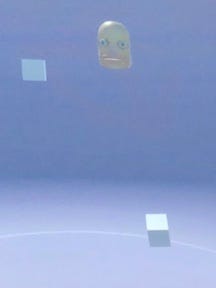
By hanging out in social spaces, we can discover what we want to work and not work. For one, changing visual details based on social cues helps immensely, i.e. changing the head size of the person speaking helps us understand visually who’s communicating. And… it works. It works well.
This led to Weisel’s Normcore, a tool for VR developers to add simple, intuitive social multiplayer to any application. I’m a big fan of it, and you can tell it took loads of effort to get it right. Loads of experimentation, practices, and foolishness (the good kind). A lesson here: don’t show information you don’t have. Complex bodies, faces, eyes, and features can be easily misinterpreted. Humans will interpret what they receive as input, so keeping it simple keeps it approachable. Thus, noodle-y arms were a good choice. And also, Wanda.
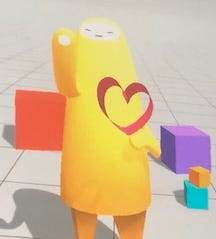
Similar to Baymax of Big Hero 6, Wanda feels huggable and approachable. She has the minimal features to allow connection to the character, but still flexible body motion to convey feelings. This truly feels delightful.
Another feature Yelena brings up is the setting of the space; organic in nature, Normal’s spaces are warm and inviting, without being heavily realistic. Stylized imperfection and small motions of organic matter are major elements to create great spaces for people to feel comfortable.
So shifting to Half&Half, Normal’s newly-released title, it’s all about small experiences to connect with other people yet to look as ridiculous as possible in real life. (Go ahead, watch someone play in it.) It’s for short snippets of shared pleasant memories, and after trying it last week I applaud the simplicity and delightful awkwardness.
Max goes into further detail on his favorite minigame in Half&Half, Hide and Seek. The epistemic knowledge we have of the original, non-VR, childlike Hide and Seek makes it easier for us to be with strangers in the game. And that’s a big deal. Epistemic knowledge is valuable to quick bonding in collective space as we’re not focusing on how to master complex rules but rather on engaging those hiding (or seeking) with us.
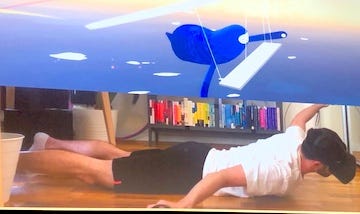
While they were developing Half&Half, Max and his team had to struggle with trying to create ways for strangers to meet for the first time. And they shelved the ideas throughout development until the end. But in the process, they discovered that the experiences they built for themselves were great places for them to hang and exchange stories, but also for strangers. Why? Because it wasn’t the space that was important; it was the people you engage with. And even strangers found value in shared spaces to engage one another as they were comfortable and more connective than phone calls or video chat.
Overall, a brilliant fireside chat. If anyone wants to join me in Half&Half, please reach out! Meanwhile, I’ll peruse the demo floor for a bit more of the afternoon, and then catch my last panel at 3:30pm.
3:30pm— Building Identity and Social Experiences in VR
My last talk to close out Connect features Facebook’s designers/researchers Maheen Sohail & Yanjin Long. They’re using research to show how users craft and share their identities, which is important to us experience designers to understand the participant and craft to their constructed identity.
They laid out the four tenants of a solid identity system: Expressive, Informative, Simple, and Flexible.
Expressive. Names are too simple, but they are just the beginning. People want their avatars to fit the same style as others. And they want to be able to change their appearance to fit the context of each individual experience.
Informative. People are so used to playing video games in VR, so normal social structure isn’t easily followed. Every time a person returns to VR, there’s a reminder: a ‘Welcome back, [name]!” To remind you you’re under your virtual identity.
Simple. Make it easier for people to recognize others, and every app using different identifiers is incredibly difficult. Auto-populating information helps with friction with keyboards.
Flexible. Users should control with whom they share their information, and when. This leads to a balance of safety and self-expression, which I admit, Facebook has been trying to iron out the last few years.
Welp, that’s it! All the talks I could catch, finished. Now on to the closing reception, and a short flight back to LA. Thanks everyone for reading along!
And that concludes Oculus Connect 6! Thank you to Oculus, Facebook, coffee, San Jose, and all the friends I’ve run into throughout McEnery’s concourses. I’ll see ya’ll next year!
Want to join in and listen live? Check out Oculus’ Facebook page or subscribe to the event in Oculus Venues with an HMD.
NoPro is a labor of love made possible by our generous Patreon backers. Join them today!
In addition to the No Proscenium web site, our podcast, and our newsletters, you can find NoPro on Twitter, Facebook, YouTube, Instagram, in the Facebook community Everything Immersive, and on our Slack forum.
Office facilities provided by Thymele Arts, in Los Angeles, CA


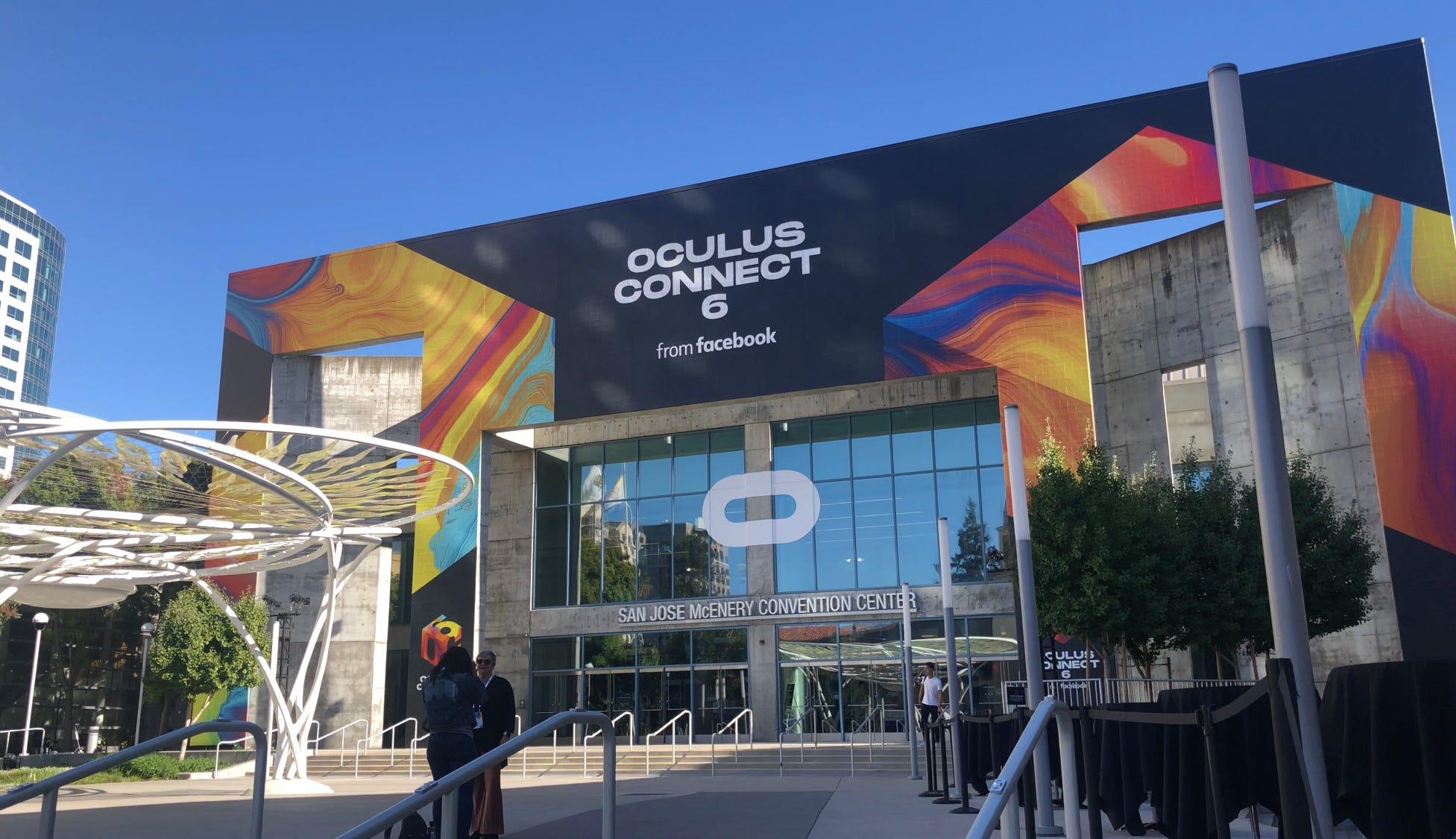

















Discussion